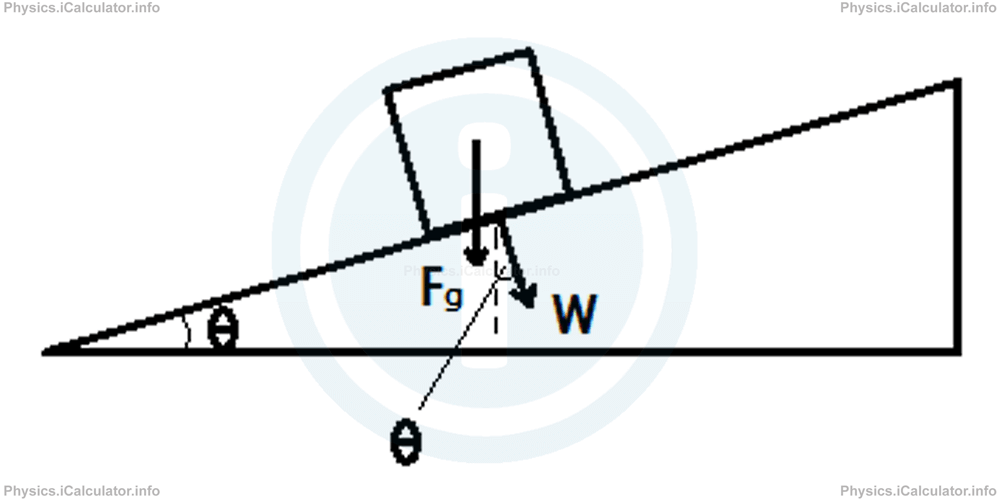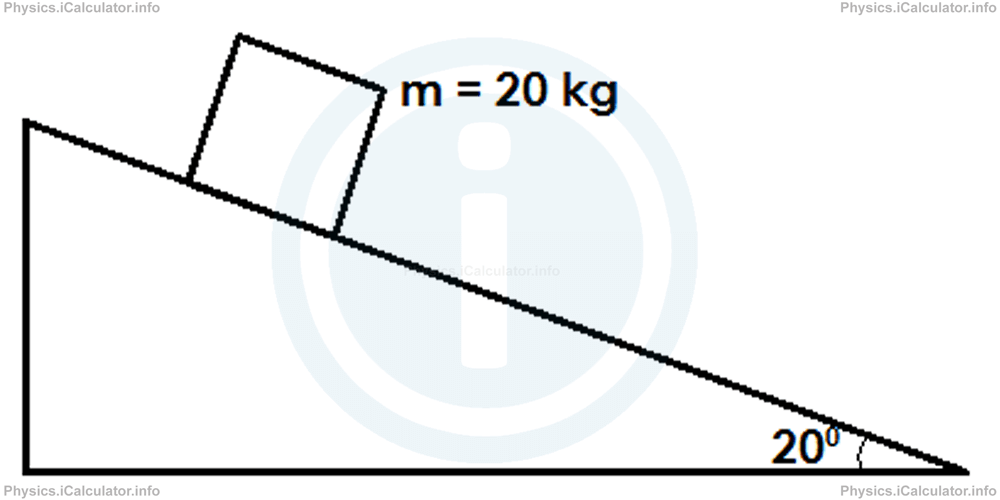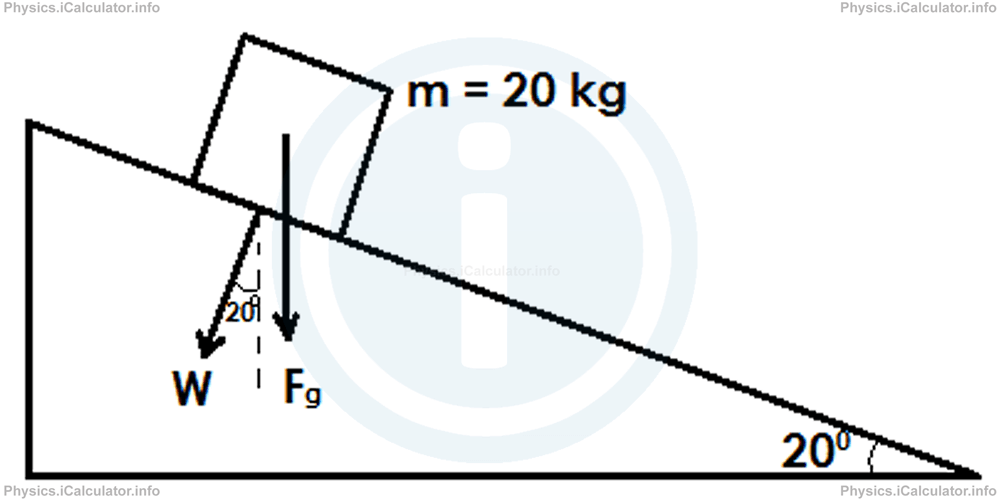Menu
Physics Lesson 4.2.4 - What is Weight?
Please provide a rating, it takes seconds and helps us to keep this resource free for all to use
Welcome to our Physics lesson on What is Weight?, this is the fourth lesson of our suite of physics lessons covering the topic of Types of Forces I. Gravitational Force and Weight, you can find links to the other lessons within this tutorial and access additional physics learning resources below this lesson.
What is Weight?
By definition, Weight, W⃗ is the pushing force exerted by an object on the place it lies (or the pulling force when hanged on a string), caused by the gravity.
From the above definition, it is obvious that weight depends on the gravity, so many people often confuse Weight and Gravitational Force with each other. Despite the common things (and the same result obtained in most cases when calculating these two forces), there are some very important differences between them. They are:
- Weight is a contact force while gravitational force is a field one. This means when an object is flying in the air, it has no weight, as it is not exerting any pushing force on the ground (remember the example in the Introduction). However, there is a mutual gravitational force exerted by the object and the Earth, which causes the object to fall on the ground if no lifting force is available.
- Even when the object is on the ground, sometimes weight and gravitational force may not be numerically equal. This occurs for example when the object lies on a slope as shown in the figure.

As you can see, Weight is always normal to the surface in which the object lies while gravitational force is always vertical (downward). If the slope is inclined at an angle θ to the horizontal direction, we have for the magnitude of weight.
Equation 7
|W⃗| = |F⃗g| × cos θ = |m × g⃗| × cos θ(From geometry, it is known that two angles with perpendicular sides are equal. Therefore, the angle formed by the slope and the horizontal direction is equal to the angle formed by the weight vector and the vertical direction because horizontal direction is perpendicular to the vertical one and weight vector is perpendicular to the slope).
Remark! Unlike the gravitational force vector, the weight vector does not begin at the centre of the object because its application point is at the place of contact between the two objects, i.e. at the bottom face of the object (and as a result, at the upper face of the slope).
Example 3
A 20 kg object rests on a slope as shown in the figure.

Calculate:
- Gravitational force exerted by the Earth on the object
- Weight of the object
Take g⃗ = 9.81 m/s2, cos 200 = 0.940 and sin 200 = 0.342
Solution 3
First, we draw the vectors of weight and gravitational force acting on the object.

Gravitational force is:
= 20 kg × 9.81 m/s2
= 196.2 N
Weight of the object (in magnitude) is:
= |m × g⃗| × cos θ
= 196.2 N × 0.940
= 184.4 N
As you see, the results are different.
You have reached the end of Physics lesson 4.2.4 What is Weight?. There are 5 lessons in this physics tutorial covering Types of Forces I. Gravitational Force and Weight, you can access all the lessons from this tutorial below.
More Types of Forces I. Gravitational Force and Weight Lessons and Learning Resources
Whats next?
Enjoy the "What is Weight?" physics lesson? People who liked the "Types of Forces I. Gravitational Force and Weight lesson found the following resources useful:
- Definition Of Weight Feedback. Helps other - Leave a rating for this definition of weight (see below)
- Dynamics Physics tutorial: Types of Forces I. Gravitational Force and Weight. Read the Types of Forces I. Gravitational Force and Weight physics tutorial and build your physics knowledge of Dynamics
- Dynamics Revision Notes: Types of Forces I. Gravitational Force and Weight. Print the notes so you can revise the key points covered in the physics tutorial for Types of Forces I. Gravitational Force and Weight
- Dynamics Practice Questions: Types of Forces I. Gravitational Force and Weight. Test and improve your knowledge of Types of Forces I. Gravitational Force and Weight with example questins and answers
- Check your calculations for Dynamics questions with our excellent Dynamics calculators which contain full equations and calculations clearly displayed line by line. See the Dynamics Calculators by iCalculator™ below.
- Continuing learning dynamics - read our next physics tutorial: Types of Forces II. Resistive Forces (Frictional Force. Drag). Terminal Velocity
Help others Learning Physics just like you
Please provide a rating, it takes seconds and helps us to keep this resource free for all to use
We hope you found this Physics lesson "Types of Forces I. Gravitational Force and Weight" useful. If you did it would be great if you could spare the time to rate this physics lesson (simply click on the number of stars that match your assessment of this physics learning aide) and/or share on social media, this helps us identify popular tutorials and calculators and expand our free learning resources to support our users around the world have free access to expand their knowledge of physics and other disciplines.